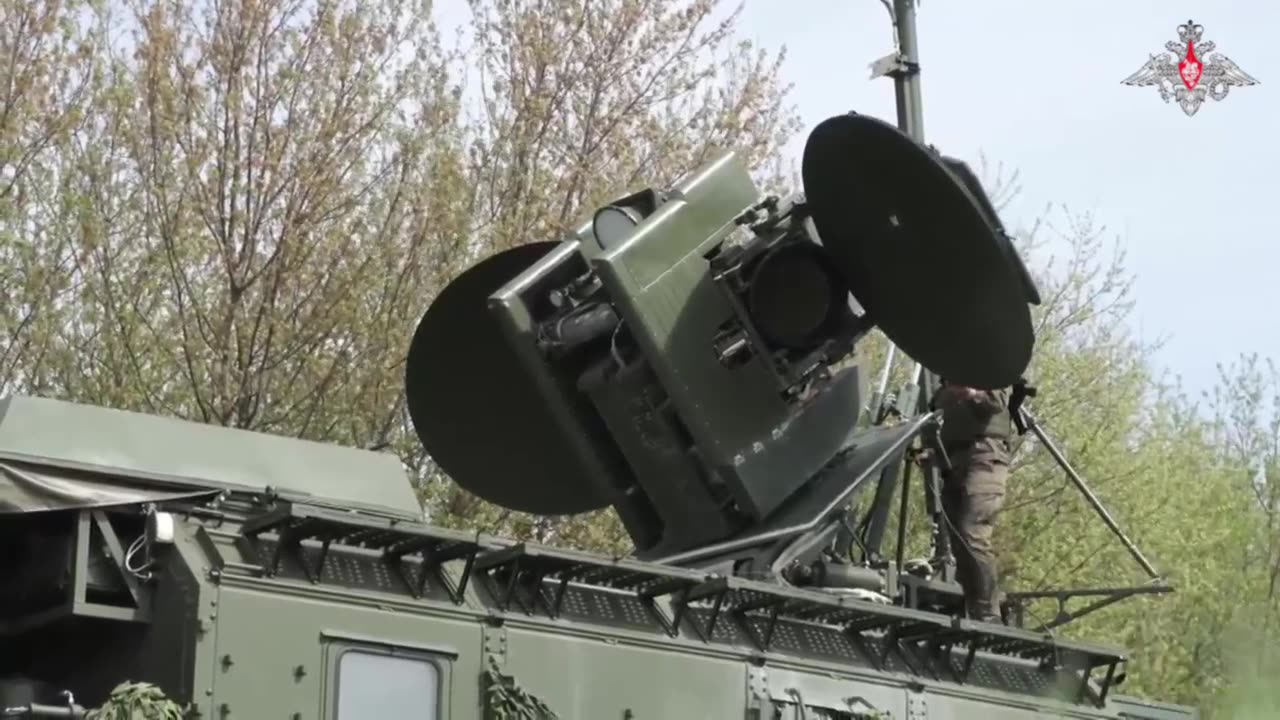Premium Only Content

War in ukraine
The tactical-technical and operational-tactical details of the use of the 1RL257 Krasukha-4 (1РЛ257 "Красуха-4") EW complex, as described by the operator with the call sign "Vesely" and the chief of the complex with the call sign "Tornado", raise a lot of questions.
They claim that both in the mode of passive reconnaissance of radio-emitting targets and in the mode of suppression of the receiving and transmitting channels of airborne radar systems of the enemy aircraft, the jamming modules of the "Krasukha-4" complex are capable of processing any radar systems operating on radiation, regardless of their operating altitude and range.
Meanwhile, it is well known that the "upper" decimetre and centimetre S-/G-/X- and Ku-band waves used by the 1RL257 jamming module are capable of propagating exclusively within the radio horizon and are not capable of effectively interfering with, for example, the onboard radar system "Shtyk" ("Штык") of the Su-24MR aircraft flying at a height of 70 m at a distance of more than 50 km.
Therefore, the flight altitude and range of the radio horizon play a decisive role in the effective operation of the Krasukha-4 complex.
There is also no possibility of direction finding of low-altitude tactical aircraft of the enemy with switched on airborne radars outside the radio horizon. At the same time, the effectiveness of the 1RL257 "Krasukha-4" remains very high against the enemy's high-altitude airborne radars. Targeting frequency and spectrum active noise and barrier interference with high efficiency suppresses airborne radars with waveguide-slot antenna arrays at a distance of 200 - 250 km, while the jam-proof AESA radars AN/APG-81/85 of the F-35A fighters and AN/ZPY-2 of the RQ-4B "Global Hawk" reconnaissance aircraft are much more effective in selecting ground objects against the background of interference generated by the Krasukha-4 EW systems.
-
 LIVE
LIVE
Nerdrotic
3 hours ago $6.23 earnedFantastic 4 HER! Daredevil BORE Again SUCKS! Disney Star Wars is DESPERATE | FNT Vegas 350
4,481 watching -
 1:38:21
1:38:21
vivafrei
3 hours agoDemocrats Defend the INDEFENSIBLE! Canada Looks Like it is FOOKED! Florida Shooter Latest & MORE!
56K27 -
 28:45
28:45
Stephen Gardner
2 hours ago🔴TRUMP CURSE: Letitia James PANICS as ALL Documents made public!
24.2K45 -
 3:34:36
3:34:36
Barry Cunningham
7 hours agoPRESIDENT TRUMP AND EL SALVADOR PRESIDENT NAYIB BUKELE PUT THE DEMOCRATS IN CHECKMATE!
63.6K14 -
 LIVE
LIVE
LFA TV
21 hours agoALL DAY LIVE STREAM 4/18/25
2,016 watching -
 13:48
13:48
T-SPLY
4 hours agoEL SALVADOR TRIP FLOPS: Senator Slammed Hard!
27.3K38 -

MrR4ger
22 hours agoBRAND NEW RPG - MANDRAGORA *ENTER FAELDUUM*
32K -
 1:09:58
1:09:58
Crypto Power Hour
6 hours ago $2.94 earnedFrom Wall Street Algorithms to Blockchain Disruption
29.4K1 -
 6:49:46
6:49:46
SilverFox
17 hours ago🔴LIVE - HUGE UPDATE! LORDS OF THE FALLEN 2.0
29.2K -
 4:38:41
4:38:41
Viss
8 hours ago🔴LIVE - Taking Wins all Over The PUBG Battleground!
58.9K3